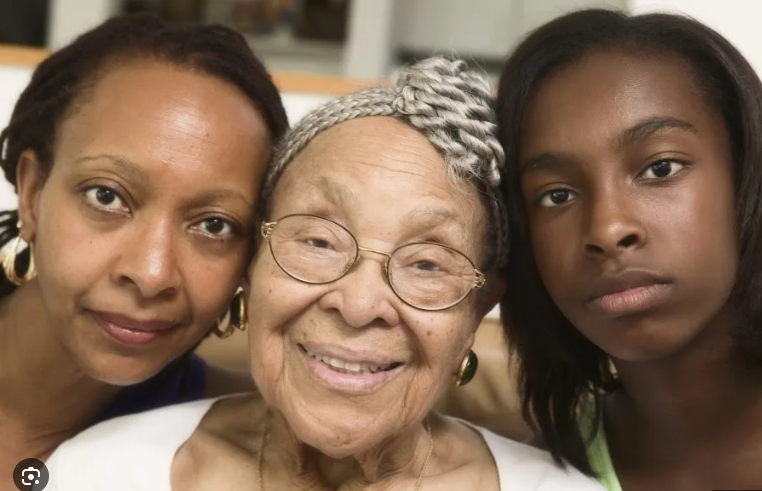Learning to Live After a Traumatic Experience
Learning to Live After a Traumatic Experience

Life is a series of ups and downs, and unfortunately, some of those downs can be deeply traumatic experiences that shake us to our core. Whether it’s the sudden loss of a loved one, a serious accident, a natural disaster, or any other traumatic event, the impact can be profound and long-lasting. However, as human beings, we have an incredible capacity to heal and grow even in the face of immense adversity. Learning to live after a traumatic experience is a journey that requires time, patience, and self-compassion, but it is possible to find hope, resilience, and meaning in life once again.
Acknowledge and Validate Your Feelings
The first step in learning to live after a traumatic experience is to acknowledge and validate your feelings. Trauma can trigger a wide range of emotions such as fear, anger, sadness, guilt, or shame. It’s important to recognize that these emotions are normal and valid responses to an abnormal and distressing event. Give yourself permission to feel and express these emotions without judgment or self-criticism. Seek support from trusted friends, family, or a mental health professional who can provide a safe space for you to share your feelings and experiences.
Take Time to Heal
Healing from a traumatic experience takes time, and it’s crucial to allow yourself the necessary space and time to heal. Avoid rushing the process or pressuring yourself to “get over it” quickly. Each individual heals at their own pace, and it’s important to respect your unique journey. Be patient with yourself and practice self-care. Engage in activities that bring you joy and comfort, such as spending time in nature, pursuing hobbies, or practicing mindfulness and relaxation techniques. Remember to prioritize your physical and emotional well-being during this healing process.
Get your signed copy of Marion Wallace’s book, Ghettos Forgotten Daughters!
Seek Professional Help
While support from friends and family is invaluable, it may be beneficial to seek professional help when dealing with the aftermath of a traumatic experience. Trauma can have a profound impact on our mental health, and a mental health professional can provide the guidance and tools needed to navigate through the healing process. Therapy, such as cognitive-behavioral therapy (CBT), eye movement desensitization and reprocessing (EMDR), or trauma-focused therapy, can help individuals process their emotions, reframe negative thoughts, and develop healthy coping strategies. Don’t hesitate to reach out to a qualified therapist who specializes in trauma if you feel it could be beneficial for you.
Build a Supportive Network
Building a supportive network of people who understand and validate your experiences can be immensely helpful on your journey to healing. Seek out support groups or online communities where you can connect with others who have gone through similar traumatic experiences. Sharing your story and listening to others can provide a sense of belonging, validation, and support. Surround yourself with individuals who uplift and inspire you, and who can offer a safe space for you to express yourself without judgment. Remember, you don’t have to go through this alone.

Practice Self-Compassion
Trauma can often leave us feeling broken or damaged, but it’s important to practice self-compassion and remind yourself that your traumatic experience does not define you. Treat yourself with kindness, understanding, and patience. Practice self-care activities that nourish your mind, body, and soul. This could include engaging in regular exercise, maintaining a balanced diet, getting enough sleep, practicing relaxation techniques, or engaging in creative outlets such as writing, painting, or playing music. Be gentle with yourself as you navigate the healing process, and remember that it’s okay to ask for help when needed.
Find Meaning and Purpose
One of the most powerful ways to move forward after a traumatic experience is to find meaning and purpose in your life. While it may seem challenging in the midst of pain and suffering, seeking out meaning can provide a sense of direction and hope. Reflect on the lessons you’ve learned from the experience and consider how you can use that knowledge to make a positive impact on your own life and the lives of others. This could involve volunteering, advocating for a cause related to your experience, or simply finding joy in small moments and everyday experiences. Embrace your resilience and let it guide you toward a renewed sense of purpose.
Embrace Growth and Resilience
Trauma has the potential to shatter our world, but it also has the power to transform and strengthen us. Embracing growth and resilience is an essential part of the healing process. Take the time to reflect on the ways in which you have grown and changed as a result of your experience. Celebrate your strength and resilience in overcoming the challenges you’ve faced. Recognize that you have the capacity to not only survive but thrive in the face of adversity. By acknowledging your growth and embracing your resilience, you can move forward with confidence and optimism.

Overcoming Intergenerational Trauma
Intergenerational trauma refers to the transmission of the psychological and emotional effects of a traumatic experience from one generation to the next. This type of trauma can have a profound impact on individuals and families, as it perpetuates patterns of dysfunction, distress, and unresolved pain. The effects of intergenerational trauma can manifest in various ways, including emotional and behavioral difficulties, relationship challenges, and a heightened vulnerability to mental health issues. Understanding the impact of intergenerational trauma is crucial for breaking the cycle and finding ways to overcome it.
The first key to overcoming intergenerational trauma is awareness. Recognizing that the trauma experienced by previous generations has had a lasting impact on one’s life is an important step toward healing. This awareness allows individuals to understand the roots of their struggles and empowers them to make conscious choices to break free from destructive patterns. It may involve learning about family history, exploring cultural and historical contexts, and seeking professional help to navigate the complex emotions and experiences that arise from intergenerational trauma.
Another key element in overcoming intergenerational trauma is healing through connection. Building healthy, supportive relationships and creating a strong network of individuals who understand and validate one’s experiences can be transformative. Seeking out therapy or support groups that specialize in intergenerational trauma can provide a safe space for individuals to share their stories, gain insights, and receive guidance on how to heal and move forward. Through these connections, individuals can find a sense of belonging, validation, and support, essential for breaking the cycle of trauma and creating a new narrative for future generations.
Finally, the process of overcoming intergenerational trauma requires resilience and self-compassion. It’s important to recognize that healing takes time and that setbacks and challenges are a normal part of the journey. Developing self-care practices, such as mindfulness, self-reflection, and self-compassion exercises, can be instrumental in nurturing one’s own well-being. Taking care of oneself physically, emotionally, and spiritually can provide the strength and resilience needed to navigate the complexities of intergenerational trauma and work towards breaking the cycle.
Intergenerational trauma can have a lasting impact on individuals and families, perpetuating patterns of distress and dysfunction. However, by cultivating awareness, seeking connection and support, and practicing resilience and self-compassion, it is possible to overcome the effects of intergenerational trauma. Breaking free from the cycle requires a commitment to healing, understanding, and growth, but the result is a brighter future and the opportunity to create a new narrative for oneself and future generations.
Additional Reading:
The Dangers of Childhood Trauma: An Unaddressed Health Epidemic
Stress: It’s Not in Your Head, it’s in Your Nervous System
Epigenetics In Psychology & Adverse Childhood Experiences
The Epigenetic Transmission of Trauma
Conclusion
Living after a traumatic experience is a journey that requires patience, self-compassion, and support. It’s normal to feel a range of intense emotions, but by acknowledging and validating these feelings, seeking professional help, building a supportive network, practicing self-compassion, finding meaning and purpose, and embracing growth and resilience, it is possible to learn to live a fulfilling and meaningful life once again. Remember, healing takes time, but with the right tools and support, you can find hope, resilience, and happiness on the other side of trauma.





